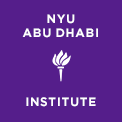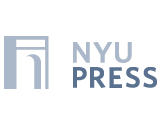In this blog post, Adam Bremer-McCollum describes his experience teaching an Arabic reading course at the University of Notre Dame, for which students read selections from Two Arabic Travel Books by Abū Zayd al-Sīrāfī and Ibn Faḍlān. He explains his approach to teaching (and learning) pre-modern Arabic and offers some tips and advice for beginning students.

“Arabic Script” by Nidhi Ranganath. CC BY-SA 4.0 via Wikimedia Commons.
We live in a vast and overwhelming world, and one experience that can feel especially overwhelming is trying to learn a new language. In his book The Doors of Perception, the English writer and philosopher Aldous Huxley famously used the image of a reducing valve to explain how the human brain copes with overwhelming sensory input by selectively ignoring some things. Language learners can also use this concept of a “reducing valve” to help them approach new texts. There’s so much possibility in a written text — how to say it, how parts are connected, what individual and joined words may mean — that readers will benefit from tools to help focus the incoming flood of words, forms, and meanings. For Arabic, aids like thorough vocalization and a glossary reduce the noise of additional possibilities and guide readers to the correct pronunciations and meanings as they read a text.
In my experience, both as a learner and a teacher, thorough and generous grammatical and lexical guidance lays a solid foundation for a future of reading: once you have read and re-read several guided readings, you know ins and outs of real texts, vocabulary in context rather than just from lists, and at least something of the more common grammar-marking vocalic patterns. You can get to know Arabic by reading Arabic, with quick references as necessary to a short, focused glossary when needed, rather than spending your time at this early stage combing through big dictionaries: you’ll be doing plenty of that later with your own texts!

Example of Judeo-Arabic: Fragment from the Cairo Genizah. Public domain via Wikimedia Commons.
I recently taught an Arabic reading course for students relatively new to Arabic. The students in the course had all studied other pre-modern literary languages (e.g. Latin, Greek, Syriac, Coptic, Ottoman Turkish), some with me. In the previous semester, they had taken an introductory Arabic grammar course, including not only examples from conventional classical Arabic but also non-standard varieties like Judeo-Arabic, Arabic in Greek script, Garšūnī (Arabic in Syriac script), and Arabic in Coptic script. The point here was both to de-center any idea of a monolithic “classical” Arabic with its accompanying notions of gatekeeping, and to see — in terms of phonology, grammar, script, literature, and more — how rich and diverse Arabic is and has long been.
For the reading course, I chose a few texts that were both entertaining and not especially difficult in terms of style or vocabulary. The texts we read included excerpts from each of the two works included in Two Arabic Travel Books: Abū Zayd al-Sīrāfī, Accounts of China and India, and Ibn Faḍlān, Mission to the Volga, edited by Tim Mackintosh-Smith and James E. Montgomery: descriptions of a king’s death by suicide (§2.8.1), how men pee in China (§2.9.6), and on pearls (§2.17.1-2) in the former; and sections on cold weather in al-Ǧurǧānīya (§10-12), entering the lands of the Turks (§15-16), and the Ġuzzīya tribe (§18-19) in the latter. Over the course of the semester, we also read chapters from an Arabic version of the book of Jonah, Burzoy’s voyage (François de Blois, Burzōy’s Voyage to India), excerpts from al-Maqrīzī’s Ḫiṭaṭ on cannabis (from de Sacy’s Chrestomathie arabe), and twelve short verse selections on cannabis culled from al-Badrī and others. All of these were chosen because they were entertaining or humorous in some way, or because they might touch on things we talk about today (e.g. comparing cannabis and alcohol). In addition, these texts are just a few of many possible choices that show how wide a range of topics Arabic literature can cover.
For each of the selections, I re-typed and thoroughly vocalized them. Editions of Arabic texts are generally not vocalized — usually the case, too, with Hebrew and Aramaic texts. However viable or not this situation is for people well acquainted with Arabic grammar and lexicon, it leaves learners in the lurch. It’s not ideal for learning when students ignore vowel patterns because they’re not always written, nor is it an efficient use of time for beginning students to shoulder the full burden of figuring them out. Amply vocalized texts are valuable and time-saving reading material for learners because they highlight the actual, fully specified forms in the text at hand, rather than forcing students to take into full consideration every other root-and-pattern possibility.
 In addition to vocalization, I also prepared some lexical help for these reader-versions of Arabic texts. At the end of each set of excerpts there is a glossary, starting with proper names (personal and geographic), and then, a short Arabic-English lexicon, arranged as usual by root. Arabic, like some other scripts (e.g. Georgian, Syriac) doesn’t mark proper names with a distinct “capital” letter, which means that sometimes learners might spend time trying to analyze a name as a regular form in the language. Proper name-lists can save readers time by immediately singling them out. The glossary is not exhaustive but includes most or all words an early intermediate Arabic reader might not know. I did leave out function words like prepositions, pronouns, common particles like lā, forms of qāla, kāna & friends, and a few other very common verbs, and very common nouns and adjectives like bint and kaṯīr/ʔakṯar, topics covered extensively in our first semester.
In addition to vocalization, I also prepared some lexical help for these reader-versions of Arabic texts. At the end of each set of excerpts there is a glossary, starting with proper names (personal and geographic), and then, a short Arabic-English lexicon, arranged as usual by root. Arabic, like some other scripts (e.g. Georgian, Syriac) doesn’t mark proper names with a distinct “capital” letter, which means that sometimes learners might spend time trying to analyze a name as a regular form in the language. Proper name-lists can save readers time by immediately singling them out. The glossary is not exhaustive but includes most or all words an early intermediate Arabic reader might not know. I did leave out function words like prepositions, pronouns, common particles like lā, forms of qāla, kāna & friends, and a few other very common verbs, and very common nouns and adjectives like bint and kaṯīr/ʔakṯar, topics covered extensively in our first semester.
As an example of the documents I prepared for the class, here is the PDF with selections from Accounts of China and India and Mission to the Volga and glossary. You’ll notice that the glossary is almost twice as long as the text itself.
In my class, the regular method was for students to prepare the assigned texts beforehand, with attention to the vocalized forms and related grammar, and relying heavily on the glossary. We would then go through all or most of the text together in class. We also did occasional cold readings of unprepared (but still vocalized) texts in class. Since students had to devote less time to checking vowel patterns, thinking through the related aspects of grammar or lexicon, and flipping through dictionaries, which can be a deflating reality for less experienced students when they come to “real” texts, we could focus on the actual texts in front of us and discuss them together on the same terms, with a lot less grammatical and lexical uncertainty thanks to the supplied text and glossary. These lexical and vocalic aids allow more time for discussion of the text’s content, on the one hand, and on the other, for discussing how to read and study Arabic texts when you won’t have a ready-made glossary and vocalized text, i.e. most of the time!
We also covered the history of Arabic lexicography and how to use Arabic dictionaries, so students wouldn’t be lost when they didn’t have access to a ready-made glossary. For people who may be studying Arabic independently, I will mention a couple of resources specifically for Arabic-English. Lane’s long Arabic-English Lexicon is a rich, aggregated translation — unfortunately unfinished — into English of Arabic lexical resources. Lane’s English is sometimes very strange (and funny), but for both meanings and forms, it remains an essential reference, especially for those unable to work with Arabic-language dictionaries. Hans Wehr’s Dictionary of Modern Written Arabic, is, of course, for more recent literature, but since some of Wehr’s earlier “modern” texts are still lexically close to older texts, students reading pre-modern literature can still find it useful. And it’s easier to navigate than Lane. There are many other resources, in English and otherwise, to go to for Arabic lexical reference, but getting familiar with the these two is a reasonable place to start.
Is it possible to learn to read Arabic (or some other language) without the help of vocalization and a glossary? Of course. But what’s the point of early-stage language students having a teacher if the teacher is just throwing bare texts to students and laying the initial burden of reading and understanding on them? “Sink-or-swim” as a model for learning to read texts in other languages may work for some students, but even then a method with a liberal dose of extra help won’t hurt, and they may even learn more. Expertise on the part of the teacher is great, of course, but it’s much better when side-by-side with generosity.
Reader’s texts like the ones presented here can focus the flood of linguistic possibility into a manageable stream. This approach acknowledges that a newer student to Arabic doesn’t automatically know or rightly infer the vowels in a regular unvocalized text, nor are they going to get through a page of Arabic without frequent recourse to the dictionary. Some of this — looking up and re-remembering patterns, grammar, meanings — is just part of language-learning, of course, but the more teachers can offer students opportunities to read a variety of texts supported by robust grammatical and lexical helps, the more Arabic they can read, appreciate, and get to know in their own ways.
—
Adam Bremer-McCollum is a translator, teacher/tutor, language consultant, and writer. He has taught languages and literatures of late antiquity, including Syriac, Arabic, Armenian, Coptic, and Hebrew, at the University of Notre Dame.

